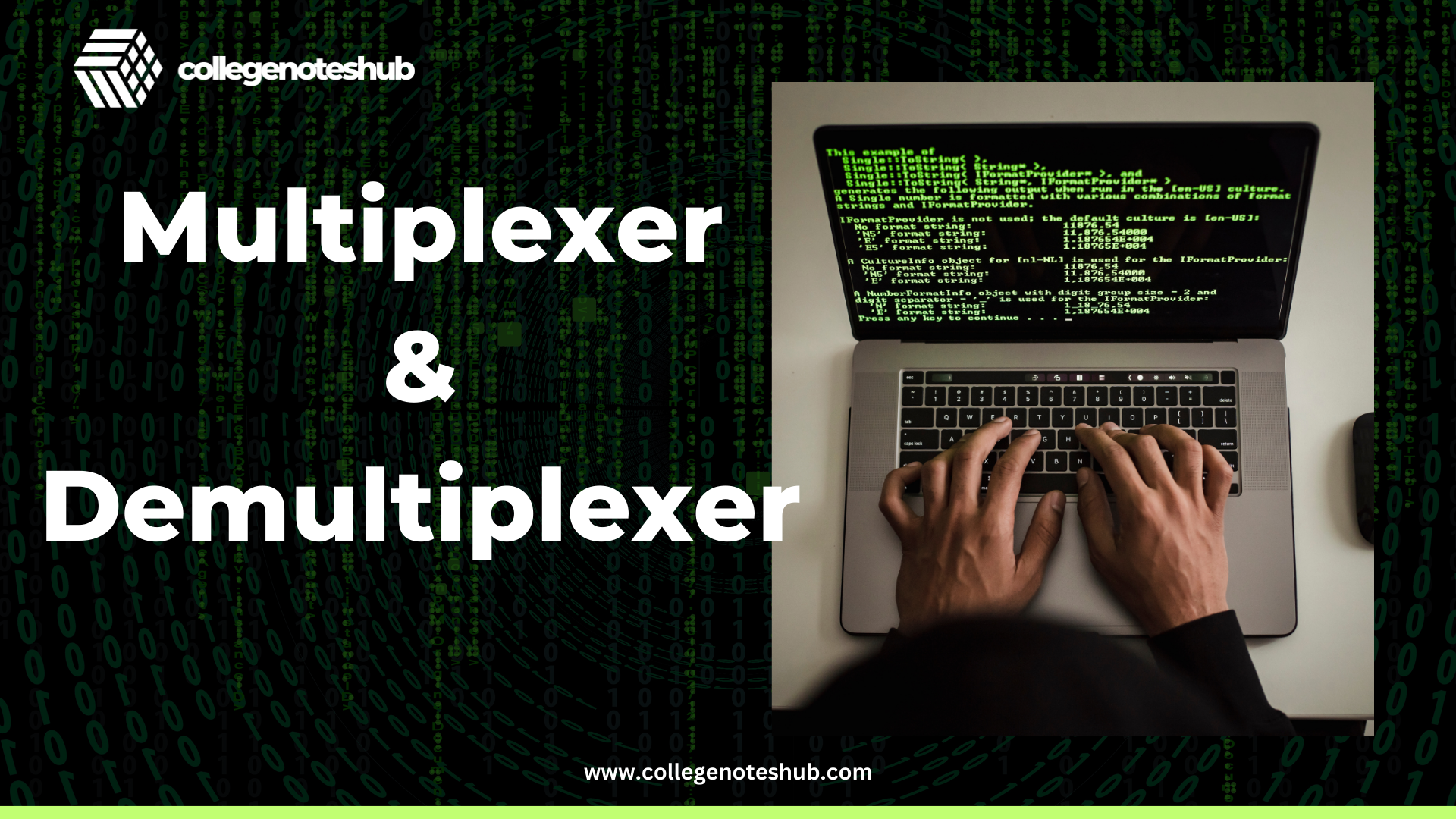In digital electronics, multiplexers (MUX) and demultiplexers (DEMUX) play a crucial role in data routing and signal management. A multiplexer allows multiple inputs to be directed to a single output, while a demultiplexer takes one input and distributes it to multiple outputs. In this discussion, we will explore the working principles, applications, and key differences between MUX and DEMUX to understand their importance in modern technology. A multiplexer (MUX) and a demultiplexer (DEMUX) are both devices used in digital circuits for routing signals.

Multiplexer (MUX)
A multiplexer (MUX) is a digital device that selects one of several input signals and forwards the selected input to a single output line. It’s often referred to as a “data selector” and is used in communication systems, computer memory, and logic circuits.
- Function: Combines multiple input signals into a single output line.
- Operation: It selects one of several input signals based on control signals (select lines) and forwards the selected input to the output.
- Usage: Often used in data routing, signal selection, and resource sharing.
Advantages of MUX (Multiplexer):
- Efficient Resource Use: Combines multiple inputs into one line.
- Cost-Effective: Reduces hardware and wiring costs.
- Simplified Circuit Design: Makes systems easier to manage.
- Data Routing: Routes data from multiple sources efficiently.
- Increased Bandwidth Utilization: Maximizes bandwidth use.
- Improved Performance: Faster data transmission due to fewer connections.
Disadvantages of MUX:
- Complex Control Logic: Requires complex logic circuits for large inputs.
- Propagation Delay: Delay increases with more inputs.
- Signal Interference: Susceptible to noise, affecting signal quality.
Demultiplexer (DEMUX)
A demultiplexer (DEMUX) is a digital device that takes a single input signal and distributes it to one of many output lines, based on the value of select lines. It essentially performs the inverse operation of a multiplexer.
- Function: Distributes a single input signal to one of several output lines.
- Operation: It takes one input signal and routes it to one of multiple outputs based on control signals.
- Usage: Commonly used for data distribution and in communication systems.
Advantages of DEMUX (Demultiplexer):
- Data Distribution: Routes one signal to multiple outputs.
- Signal Routing: Distributes signals effectively in communication systems.
- Memory Access: Helps in selecting specific memory locations.
- Simplified Circuit: Reduces wiring complexity.
- Cost-Effective: Minimizes installation and material costs.
- Parallel Data: Supports simultaneous signal distribution to multiple destinations.
Disadvantages of DEMUX:
- Complex Design: Large DEMUX requires intricate control logic.
- Delay: Signal delay increases with more outputs.
- Power Consumption: Higher power usage as the number of outputs grows.
Difference Between Multiplexer & Demultiplexer :-
Here’s a comparison between a multiplexer (MUX) and a demultiplexer (DEMUX) in a table format:
| Feature | Multiplexer (MUX) | Demultiplexer (DEMUX) |
|---|---|---|
| Functionality | Combines multiple inputs into a single output | Routes a single input to one of many outputs |
| Data Flow | Multiple inputs → Single output | Single input → Multiple outputs |
| Number of Inputs | Multiple inputs | Single input |
| Number of Outputs | Single output | Multiple outputs |
| Select Lines | Used to choose which input is passed to the output | Used to determine which output gets the input |
| Primary Application | Data selection, channel selection | Data distribution, channel distribution |
| Common Use Cases | Communication systems, data compression | Memory decoding, data routing |
| Example Configuration | 4-to-1 MUX: 4 inputs, 1 output, 2 select lines | 1-to-4 DEMUX: 1 input, 4 outputs, 2 select lines |
Multiplexers and Demultiplexers are essential components in digital circuits, streamlining data flow and communication efficiency. While they offer numerous advantages in signal management, it’s important to consider their limitations in complex systems. To dive deeper into digital logic design and explore other important concepts, be sure to check out the next post in our Digital Logic Series.
